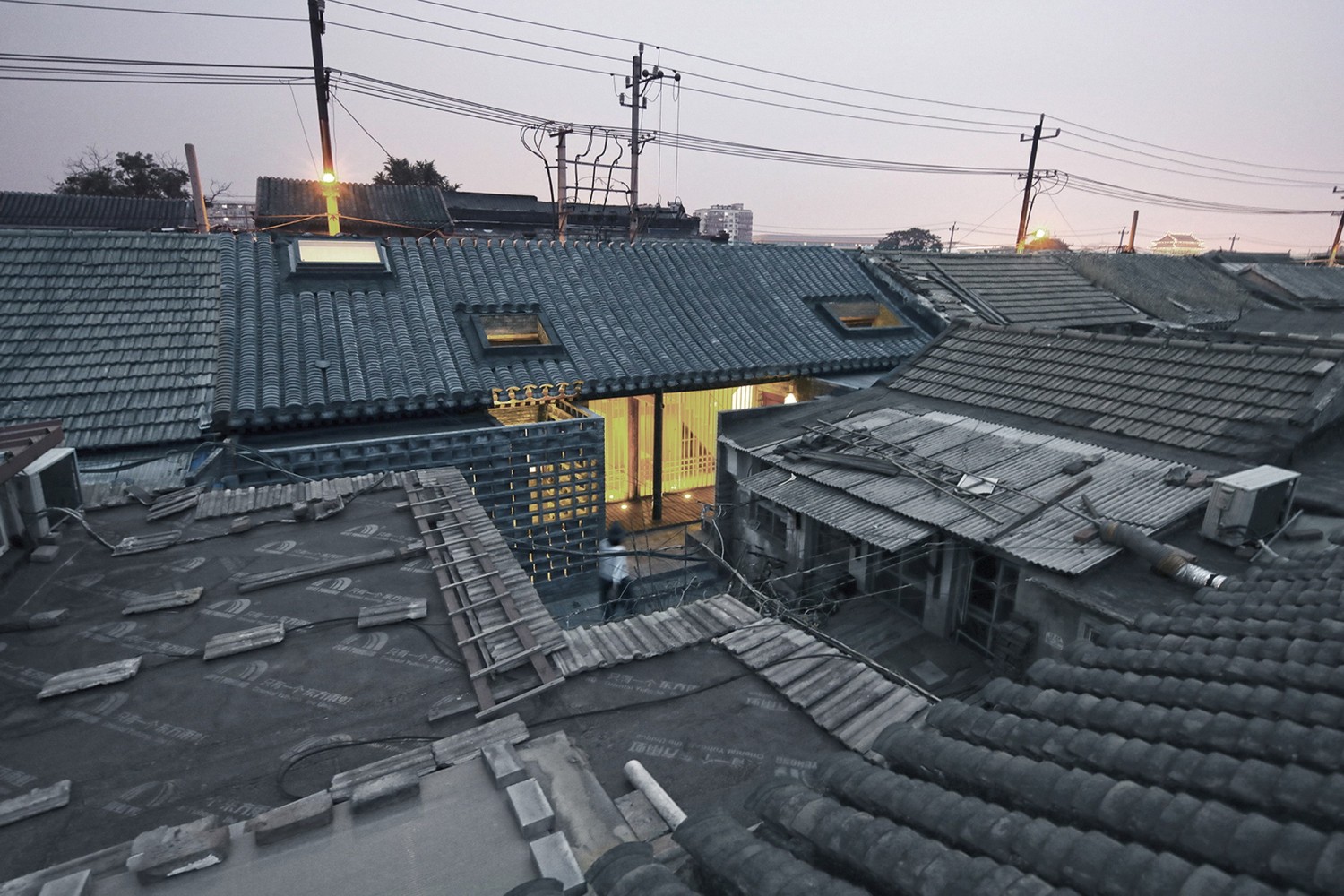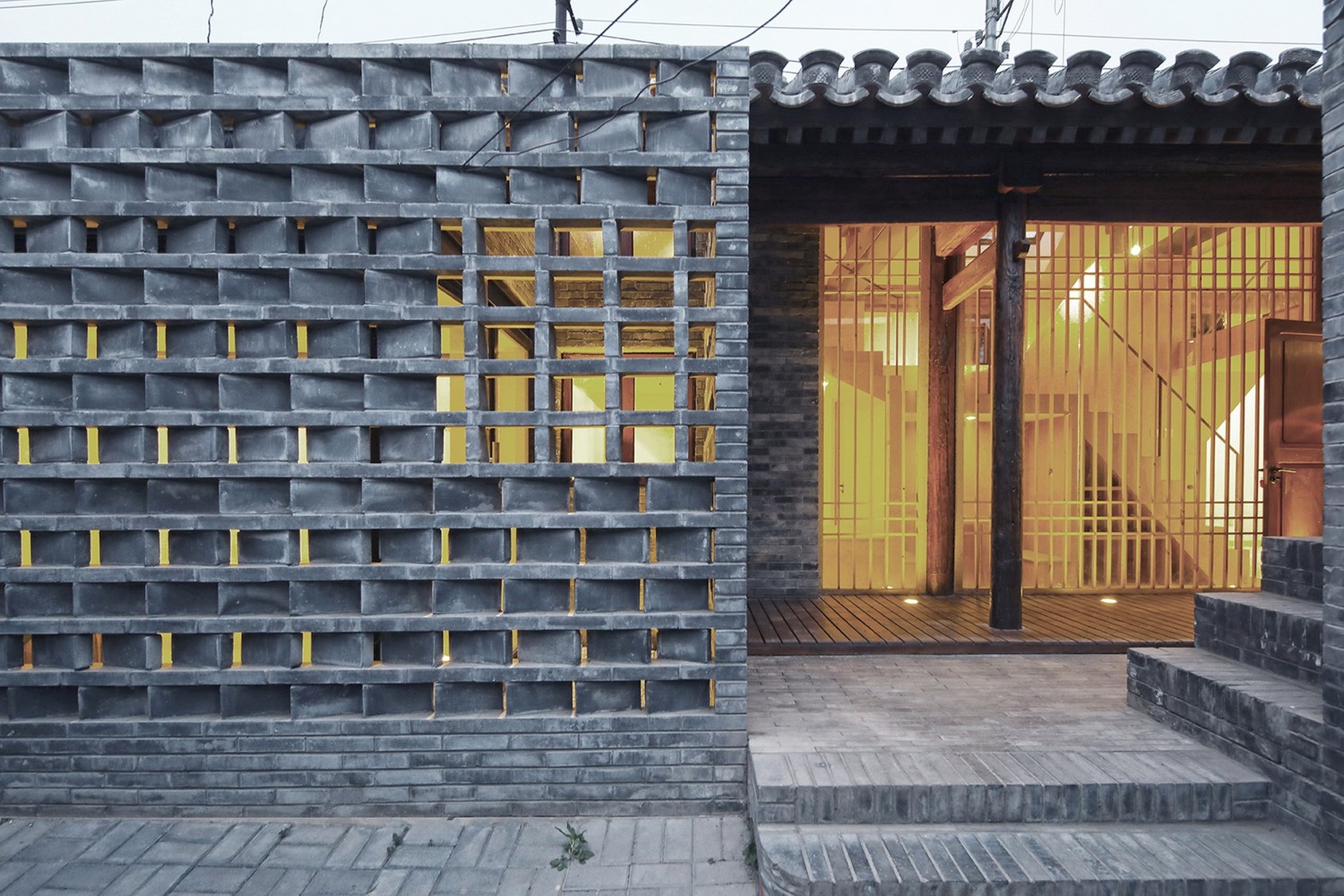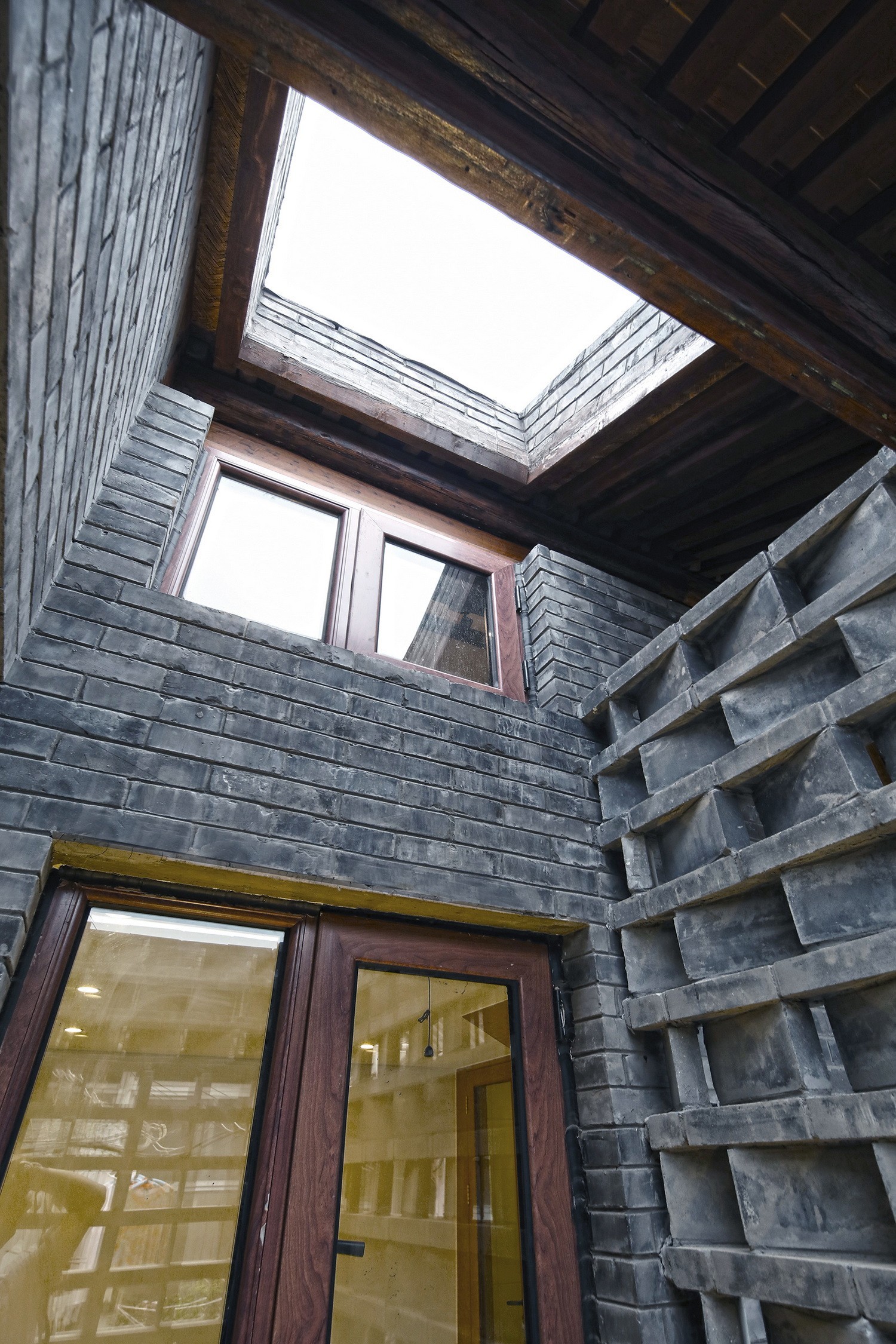| 公司: | hyperSity | 类型: | 建筑 |
|---|---|---|---|
| 地区: | 中国 | 标签: | 建筑改造 | 旧改项目 |
V宅的建筑改造试图阐述和传达在旧城改造中,本地人和外地人相互混杂的情况下,如何处理新设计的角色。建筑师对于改造的预期不希望将年代不断叠加的必要空间要素痕迹抹去。在产权明晰的情况下,有价值和意义的使用空间是可以继续保存,并通过新设计的手法介入, 能够更好的融入街区的整体面貌并活化新的文化记忆。
It has been transformed to "Dazayuan", which means the ownership has been distributed to a total of 7 to 8 households. After four families moved out, a complete hall was formed in the north side.
胡同的杂院生活是紧凑的,你中有我,我中有你。V宅每一处改造都会继续影响周边邻居的生活,并因此留下生活痕迹。邻居利用这个小平台摆放他们晾晒的鞋子,晾衣绳会搭到新设计的这个镂空砖上。胡同生活持续的叠加在个杂院新建筑上, 而不是一座独处的孤立空间。
Hutong life is compact. Every renovation of V house will continue to affect the lives of its neighbors and leave a trail of new life. Neighbors use the small platform to lay out their shoes for drying, and clotheslines are placed over the newly designed hollowed-out brick wall. Instead of an isolated architecture, Hutong life is constantly superimposed on the new renovations.
V宅的建筑改造实施三个策略,杂院空间需要提高使用效率,让每一寸的室内空间得到充分的使用。新设计中,我们在室内植入一种可变,可功能转化,以及复合型的体量。整合厨房、淋浴间,卫生间,洗衣房 会客、办公,榻榻米等休息空间。这个体量对一个三开间的厢房进行重新划分,用秸秆版进行快速搭建。
Three renovation strategy of the V House was implemented. First of all, the space of the courtyard needs to improve the utilization efficiency. This variable, functional and complex spatial volume is implanted with interior integrations of the kitchen, shower, bathroom, laundry room, the laundry room, the office, the tatami and the rest room, by using the straw board material.
一楼的东西两跨形成的通高空间,是开放自由的:可居住,可联合办公,可展览,并可进行小型活动。
The high space is formed by the east and west bay after removing the ceiling on the first floor which is open and free: it can be used for living, co-working, exhibition and small activities.
二层设置私密的工作空间,融入坐卧式讨论私密空间。在拿掉吊顶之后,在屋顶的三角形空间下新的空间体量的中心区,利用两个‘V’ 字型的交通空间组织有效的绕过屋梁,形成层次丰富室内空间夹层, 并将这几个不同的标高空间有效的组织起来。
On the second floor, working space is set, with semi-private space for sit-down discussion. In the triangle of the roof space under two main beams, two "V" type transport space is functioning the effective organization of multiple elevations layers.
另外一大策略是把自建部分拆掉后,改建成更加坚固永久的建筑体量。我们利用传统合院建筑的青砖物料堆砌了花砖墙把原来加建红砖结构替换掉,形成两处围合庭院和透光天井。在保证内部的私密性同时,增加了空间使用上的透光性。花砖墙东侧的外立面完全打开后,增加木制格栅和玻璃幕墙,提供良好采光。
The other big strategy is to replace the self-built part with a more solid and permanent construction. The architects took advantage of the traditional courtyard grey bricks to pile up the brick wall, forming two enclosed courtyard based on the original footprint of the self-built parts. While ensuring internal privacy, it also increases transparency for looking out. After the facade on the east side of the brick wall is fully opened, wooden grille and glass curtain wall are added to provide good lighting.
策略三是重新调整由于自建占据被四合院庭院空间,并充分利用屋顶空间,创造一个三维的公共空间。使得室内空间的公共活动可以进行适度的外部延伸,包括单人休憩,两个人私密交谈或三人以上的讨论。
The third strategy is to readjust the courtyard open space occupied by the self-built architecture and make full use of the roof space to create a three-dimensional public space. The public activities in the indoor space can be extended to a moderate degree, including a relaxation of individual person, a private conversation between two people or a discussion of more than three people.
项目图纸:
一楼平面
二楼平面
剖面
设计单位:hyperSity 建筑设计事务所
项目地址:北京市,西城区
设计内容:建筑+室内+景观
建筑面积:约150平米
设计时间:2015.08—2016.08
施工时间:2017.03—2018.04
主持建筑师:史洋、黎少君
设计团队:杨玲、张国梁、殷漫宇
摄影:hyperSity
更新日期:2020-07-08 17:10:20
非常感谢 hyperSity 带来的精彩项目, 查阅更多Appreciations towards hyperSity for sharing wonderful work on hhlloo. Click to see more works!

































